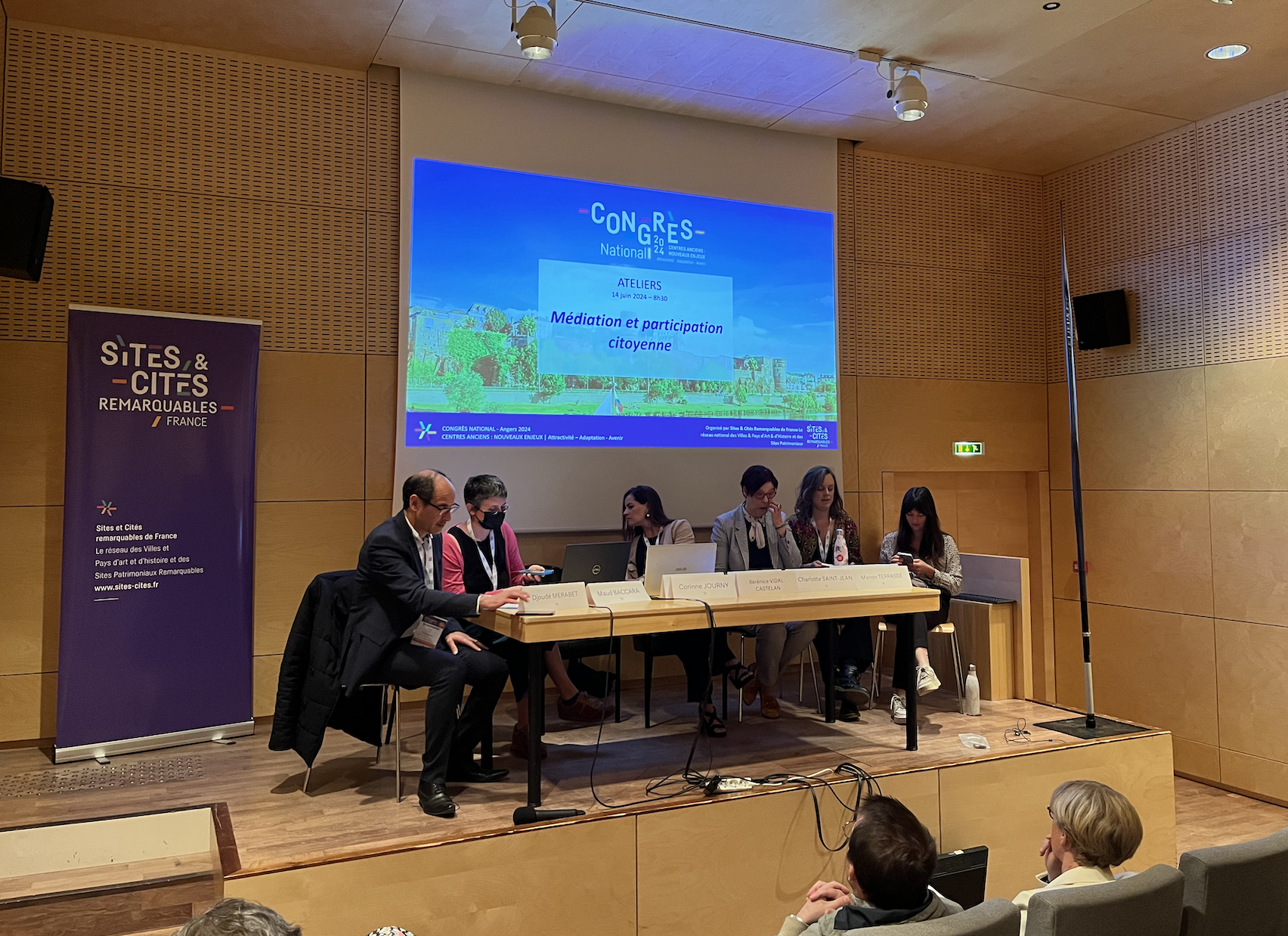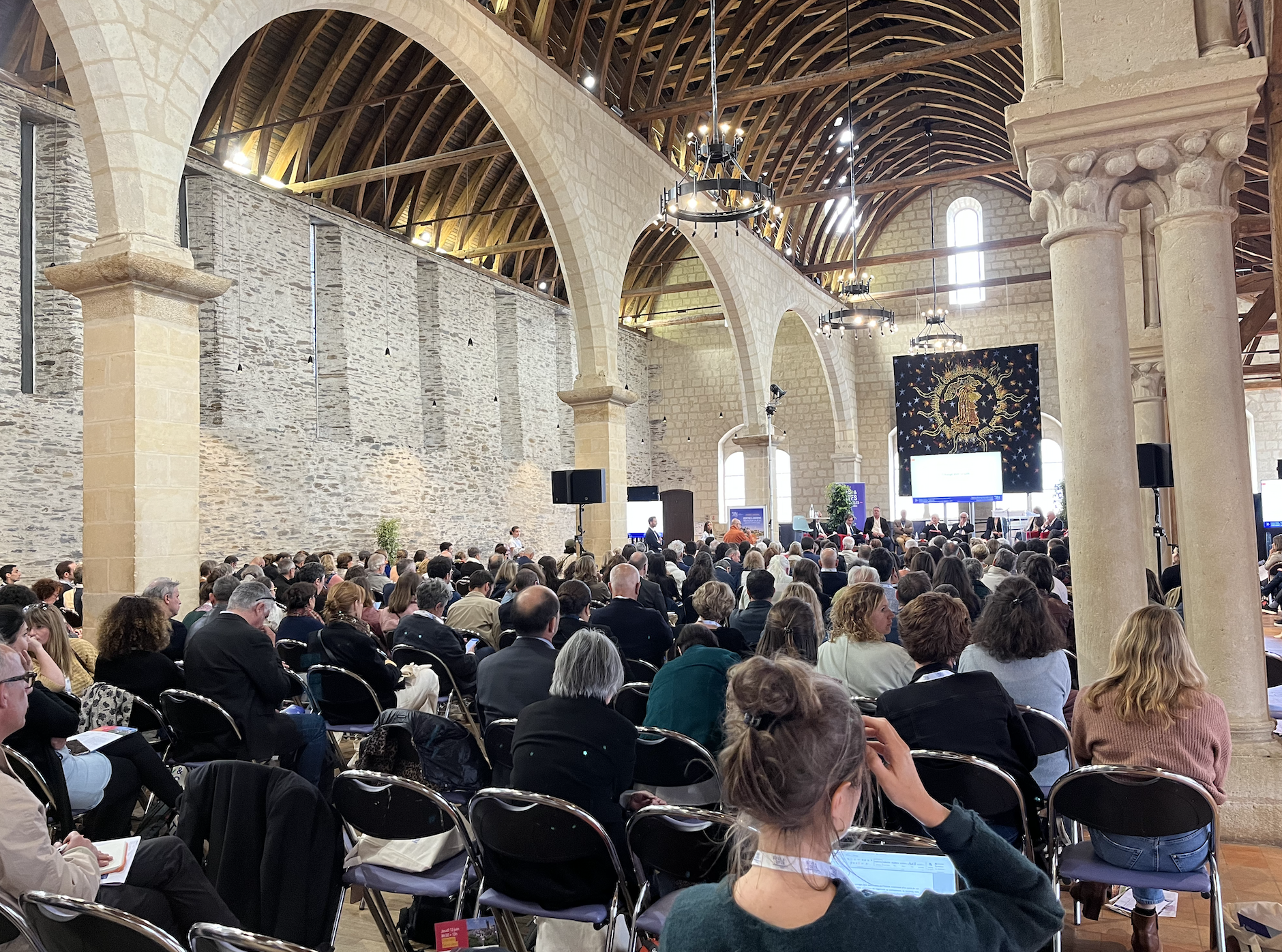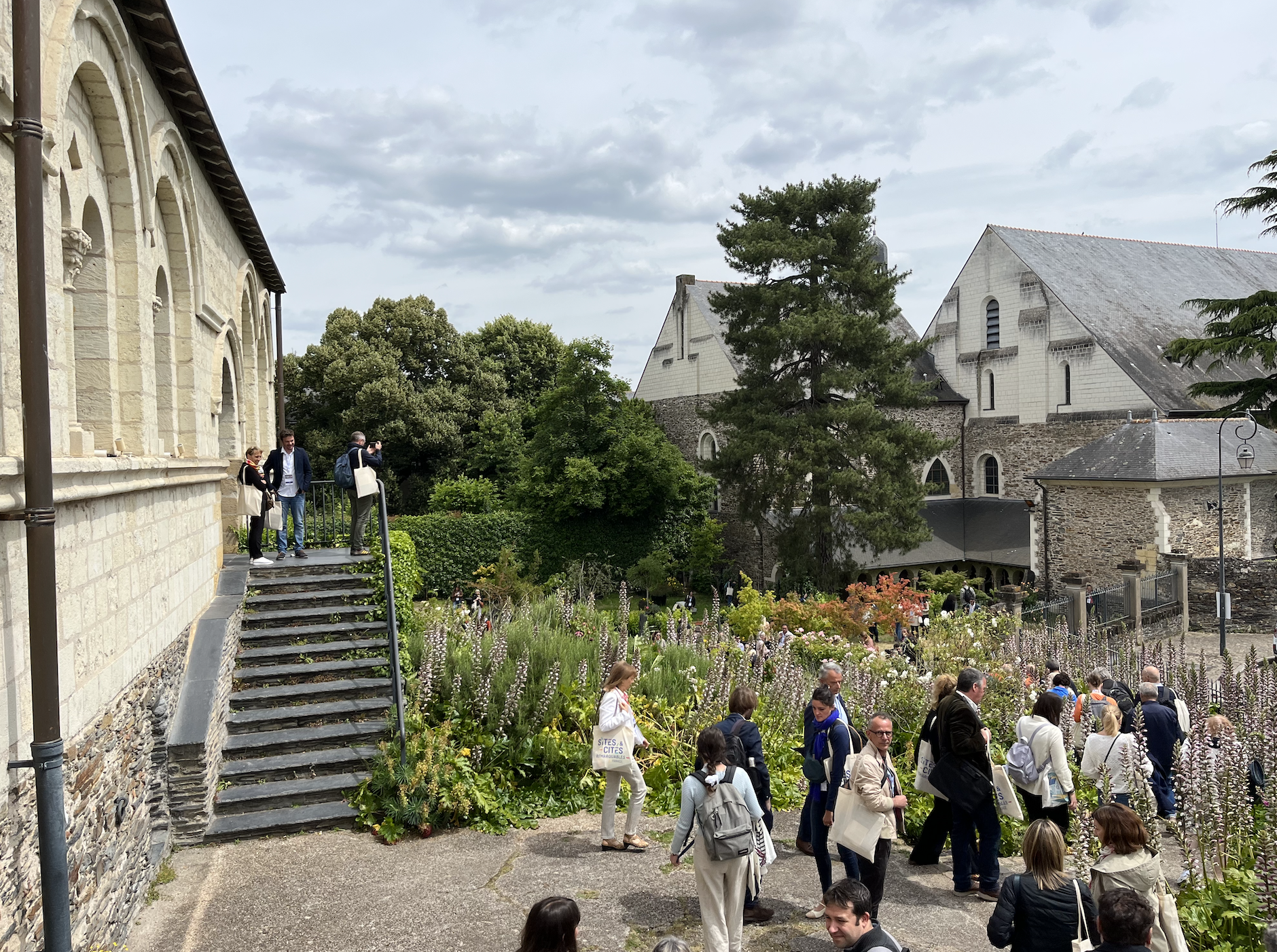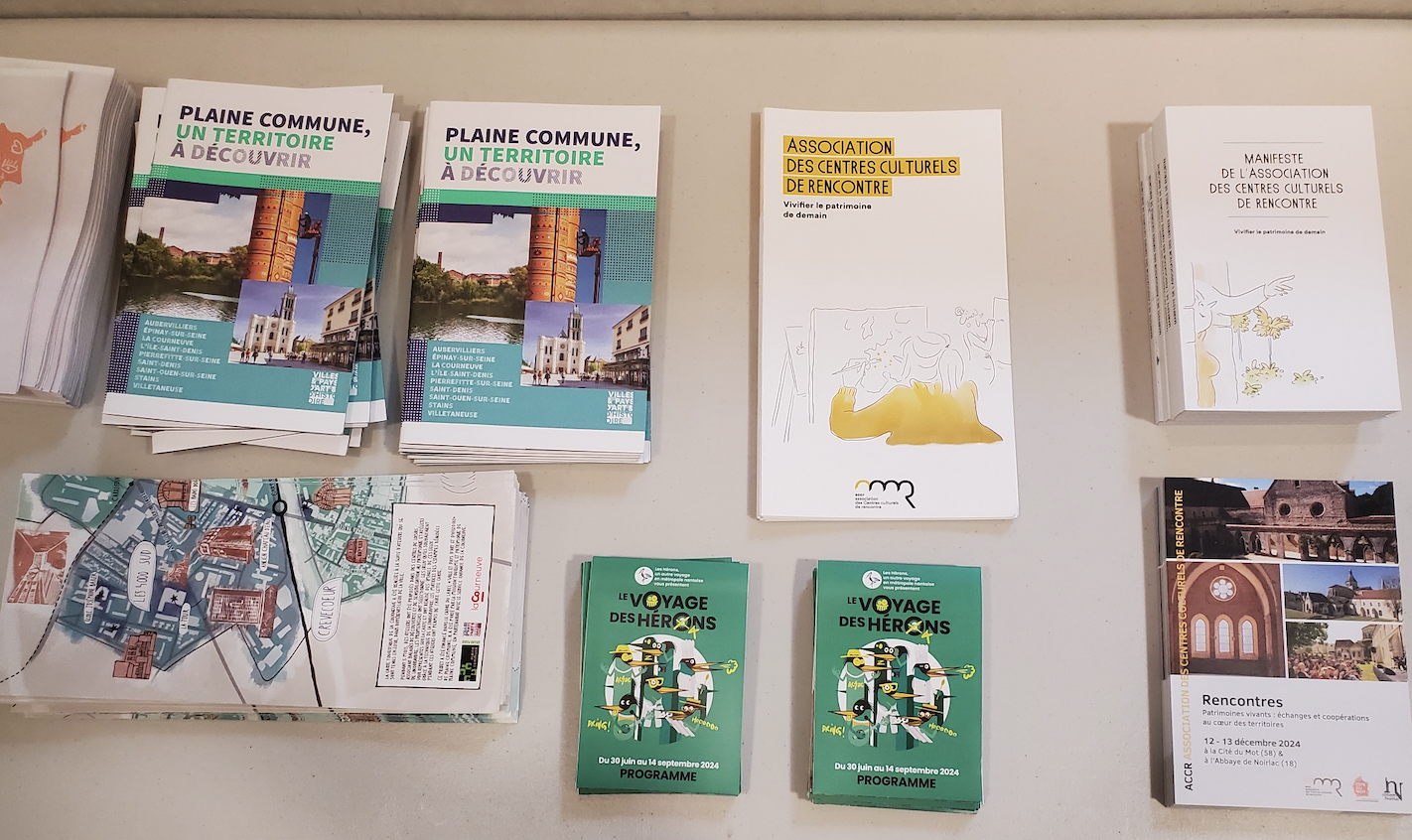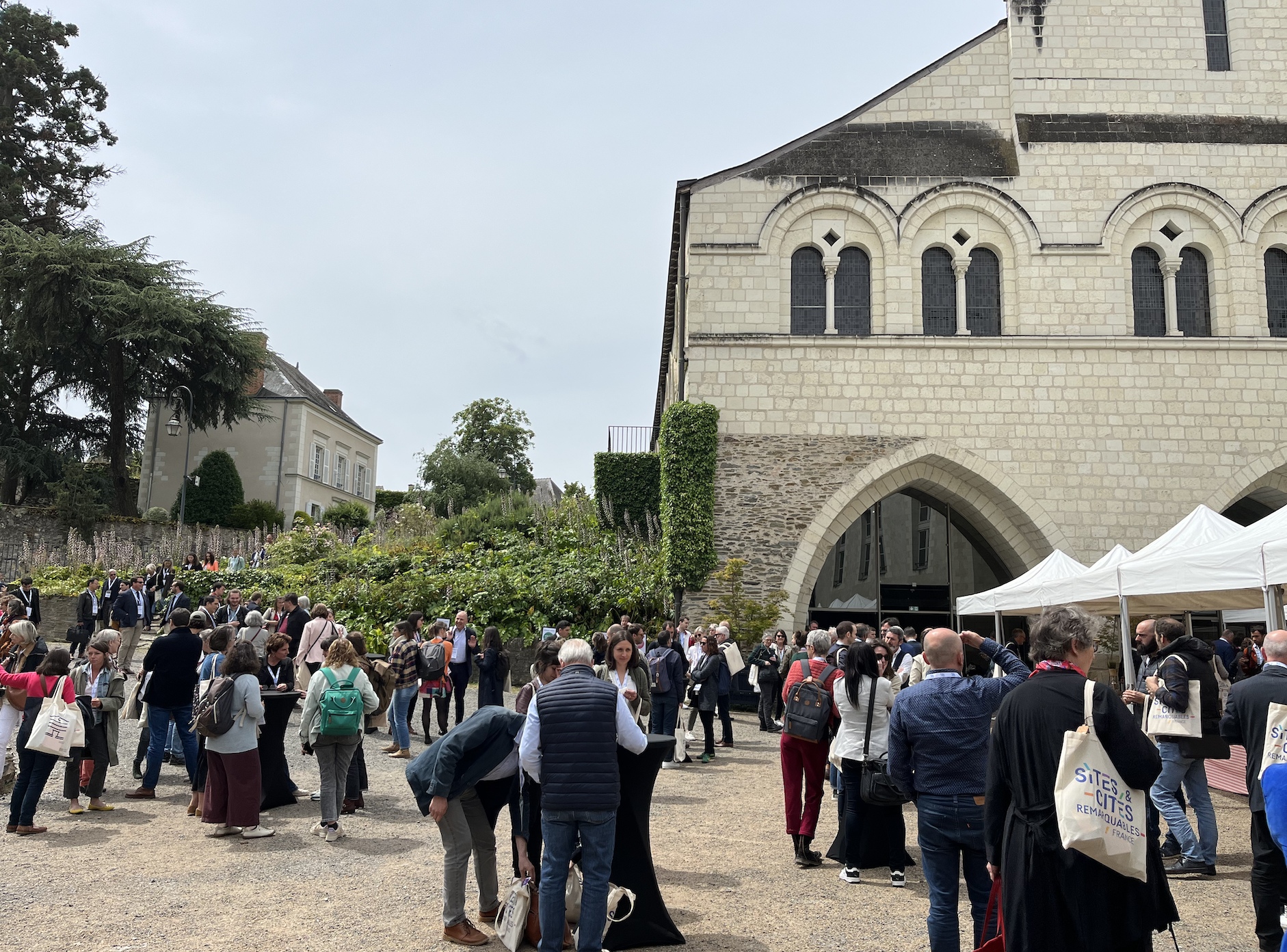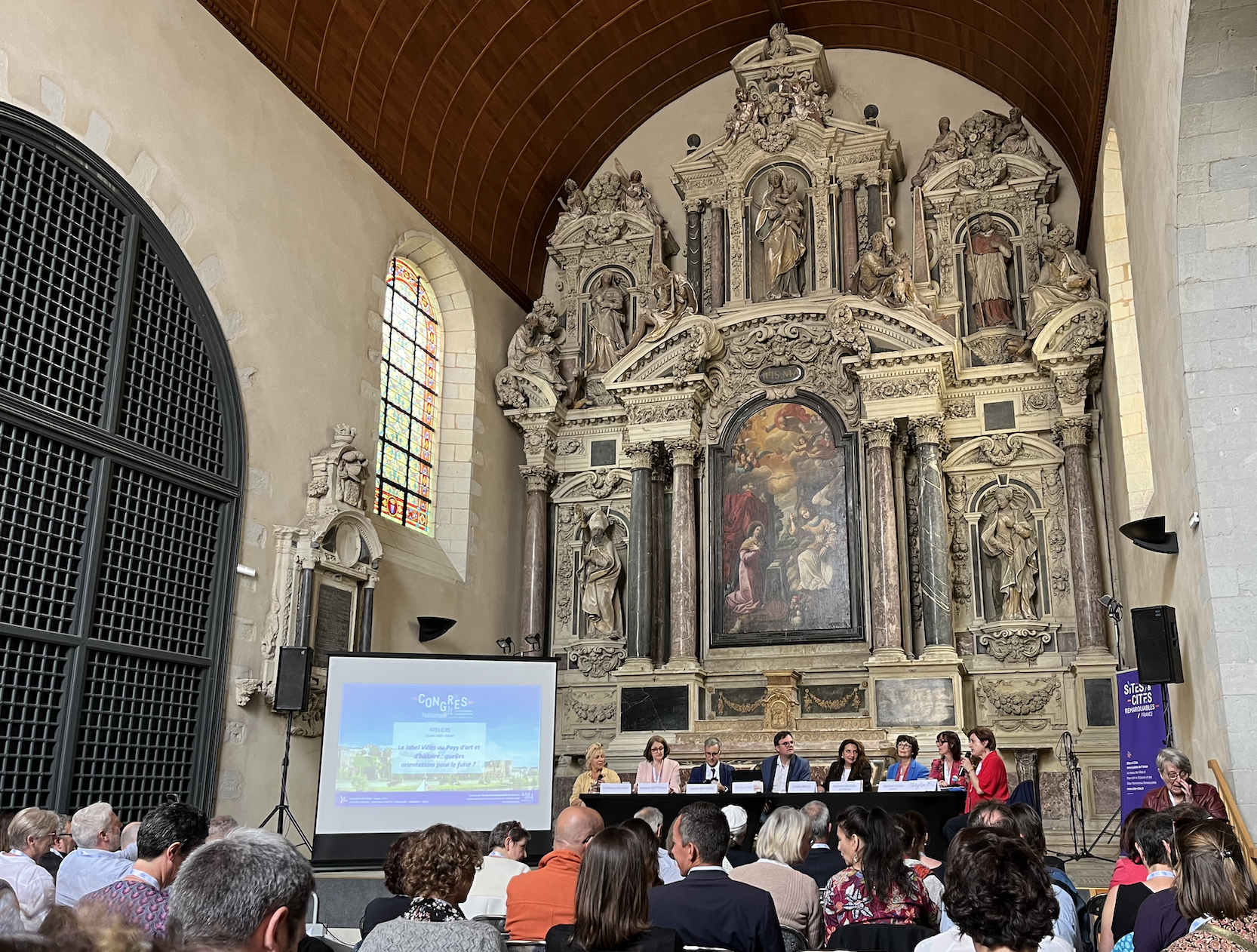On 13 and 14 June 2024, the ACCR was invited to the national congress of the Sites & cités remarquables network, which was held in the town of Angers. As part of this event, the ACCR took part in a round table on mediation and citizen participation in the field of heritage.
Focusing on the rehabilitation and enhancement of old town centres, this event reaffirmed that reappropriating built heritage enriches its history and keeps it alive.
While some of the discussions focused on sobriety issues in a context of multiple climate upheavals, with the idea of raising awareness of these challenges through appropriate rehabilitation processes, the social aspect, embodied in cultural initiatives in particular, was also discussed. The interactions between cultural projects and environmental protection were highlighted as part of a process of ongoing transformation and appropriation of our heritage.
The ACCR was able to reiterate its missions and values, emphasising its adherence to the principles of the Faro Convention. The idea of working on the interpretation and application of the Faro Convention was born out of the relative failure of certain cultural policies: cultural institutions are little or not at all representative of social and cultural diversity.
Through a fifteen-month training programme with Oiseaux de passage, the ACCR is working to promote a new approach to heritage within the network and its partners. The main objectives of this training, aimed at teams, are to embrace the multiple meanings of heritage, to (re)politicise heritage, to give a place of action and a voice to heritage communities, to co-construct common narratives as part of a cooperative approach, to focus more on why conserve heritage rather than on how, and to consider heritage as a resource for building society and living together better.
As part of this rethought approach to the area and its residents, the Ferme de Villefavard has cocreated a multi-voice heritage walk with local residents to reconstruct and publicise the history of the village women who helped to shape it. It's a way of looking at the history of the place from a new angle, adding to its richness, and allowing everyone to share their stories of attachment to the village. In this way, we are touching the territory.
Paying attention to stories means respecting the diversity of interpretations and establishing conciliation processes. To create a collective narrative and embrace a place, it is necessary to confront, question and combine the different discourses. This requires a search for heritage narratives that can bring to light narratives that are obscured, forgotten, complementary or even dissonant with the dominant narrative. It's a question of reconsidering them in order to pass them on, so as not to impose a single, idealised story on the public.
La Ferme de Villefavard has thus questioned the place of a cultural institution: how can its role and missions be thought through in the light of the specific characteristics of an area?
Other examples of participative and/or cooperative projects /
- Les Hérons nantais is a collective of residents committed to (re)creating an active local fabric, responding to the need for social cohesion expressed by residents who may have felt sidelined by the city of Nantes' cultural and tourist development strategy;
- "Les raconteurs de ville" in Elbeuf is a cooperative project that has created synergies between tour guides and local enthusiasts keen to pass on their approach to heritage. The tour guides are recognised here as resource people who can help to tell and share stories in a spirit of cohabitation, complementarity and not competition;
- La Poste Group, a local company with a strong social link, has taken on the role of mediator for local residents, giving them a voice on everyday issues;
- As part of its work on the local urban development plan (PLU), the Plaine Commune area has been looking at what local residents consider to be part of their heritage, taking care to diversify the ways in which citizens can get involved so as to reach out to all sections of the public. As a result of this process, sensitive and participatory maps of the area have emerged, reflecting the many different ways in which heritage is accepted, and not just in terms of buildings.

